Click on image or Charmouth Home to return back.
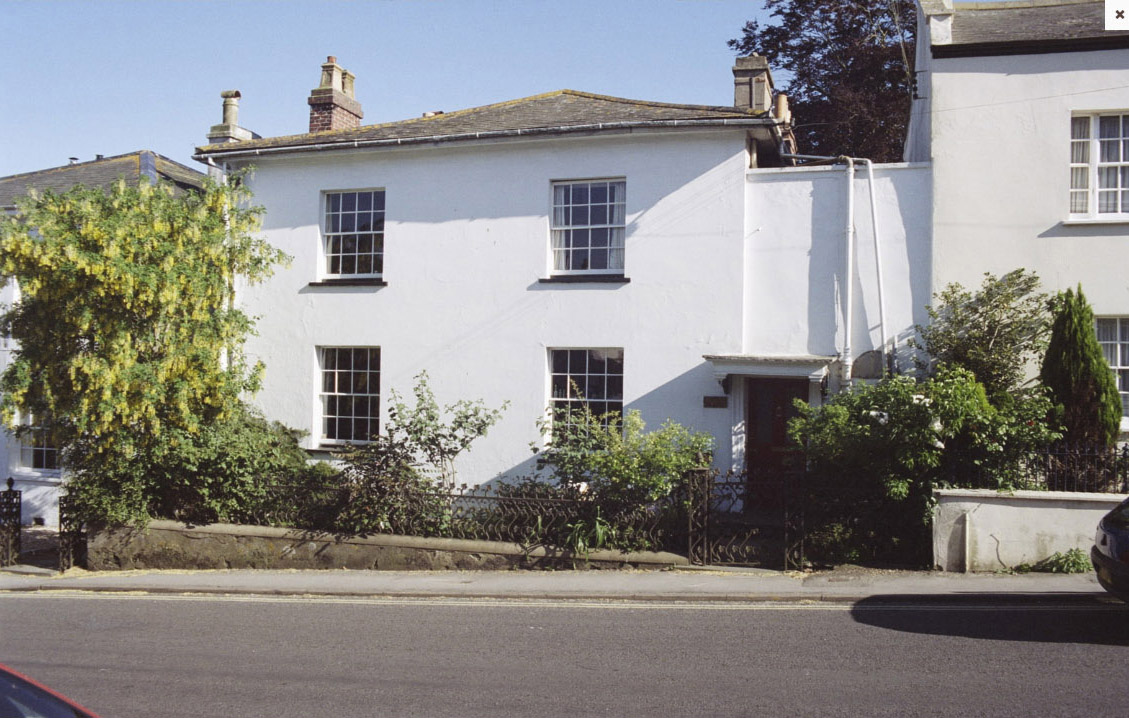
Clarence Villa to Carrum House
1843-2002
The parcel of ground on which the group of three houses were built between Beech House and Lower Sea Lane were probably originally church land, with Beech House as the Rectory.
The area occupied by the tennis courts known as Rectory Meadow.
Issac Cooke bought Beech House, perhaps from the Church Commissioners and the strip of land bordering the Street. He then sold the house to Miss Kennaway and the land to William Hoare. He then sold the first plot to John Hodges in 1843 who subsequently had Clarence Villa built, the second plot to Samuel Dunn who built Littlecote and retained the third plot for the building of Sandford Cottage.
There are some interesting stipulations in the indenture between Hodges, Hoare and Dunn when the plot was sold.
The property should be enclosed on the east and south by a seven foot wall “ properly pointed and of good stone and lime”.
John Hodges “ shall not construct or open in any wall of land sold by William Hoare to Samuel Dunn”. This appears to have been subject to compromise as we have a small bedroom with a window facing east.
John Hodges “ shall not at any time permit the trade or business of innkeeper or bee or ale housekeeper in any dwelling to be erected without the consent of William Hoare and Samuel Dunn.
At some point John Hodges must have bought Beech House, as he had the adjoining shop built and operated as a Butchers for many years. There was a right of way passage between Beech House and Clarence Villa when John Hodges owned both properties, but this was blocked off later ( probably when the house was sold on 1877). Our bathroom still extends over what was the passage.
I believe that Clarence Villa was the only one of these houses to have a cellar and when we bought the house in 1961, the original pump with its stone trough was still there, with initials J.H. in lead. Unfortunately wooden parts were riddled with woodwork and had to be taken out, but we still have the basic parts. The pump drew water from a small stream which flows under the cellar flagstones, into a large reservoir and out into the main drain. Under extreme conditions it has an unfortunate habit of emerging at other points in the cellar. There was a copper boiler for the laundry, heated by a coal fire with a cleverly constructed spiral brick flue which runs under the kitchen floor to the chimney. This also had to be dismantled after an errant stream on one occasion changed direction and emerged on the side of the wall! The stream is probably one of the many which emerge in a line parallel to Lower Sea Lane on the northern side at roughly the same elevation along a junction of Lias sands and clays which can be seen after wet weather.
John Hodges died in 1873, and in his Will left Clarence Villa to his two unmarried daughters Eliza and Ellen. Beech House was left to Richard Hodges, his son, although it was let to Robert Manley.In 1877 the two sisters sold the house to George Mortimer, who had traded as a Grocer for some years previously in what is now Nisa stores. Whether or not he lived here or let the house is not clear, but from the subsequent conveyance it evident that he moved to London and then to Devon before selling the house to George Hodges from Portland, in 1909. George Hodges died in 1934, leaving the house to his son Alfred, who let the house to R.G. Cabell, while operating a boarding house at Claremont as the top of the village. His address for the next conveyance is given as Southlea in Higher Sea Lane. The house next changes hands in 1948, when Alfred Hodges sold it to A.G. And R.G. Cabell. A.G. Cabell was living at Knapp Cottage, and R.G. Cabell was already living at Clarence Villa. They were both listed as Grocers.
We bought Clarence Villa from the Cabell in 1961, and as we didn’t particularly like the name, and I had read Hutchins History of Dorset, we decided to call the house after one of the Saxon names for Charmouth, hence “Carrum House”. Peter Bide.

Mr Issac Cook - House & Garden - 9d
Mr. Issac Cook - Reverend Snow - 4d
Mr. Gundry - William Foss - Three Crowns
Thomas Snow is shown renting Beech House from Isaac Cooke, from Clifton, Bristol.
Isaac Cooke was only there briefly as the 1841 Tithe map shows it unoccupied and soon after John Hodges, the butcher moves in and opens his shop in the adjoining Winton House. In 1835 Isaac gave £100 towards the building of the new Church, the largest amount donated. He died in 1852 aged 81 at Windsor Terrace in Clifton. His son, of the same name continued in his business and was Mayor of Bristol in 1857.
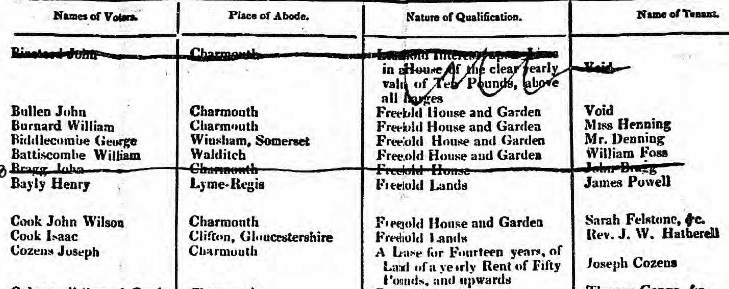
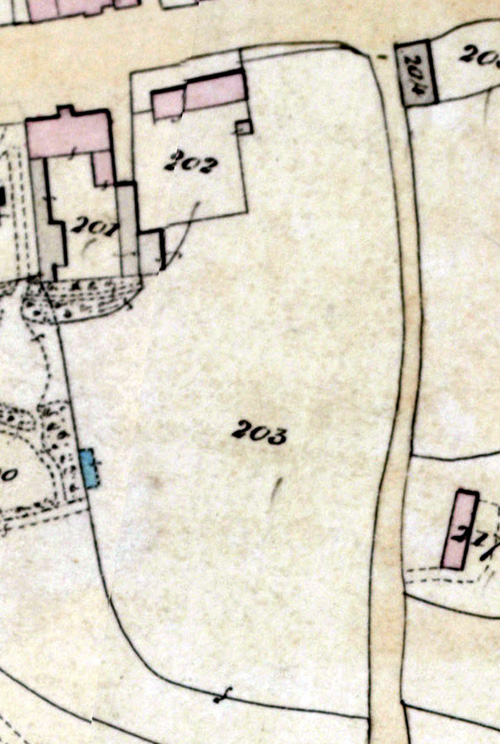
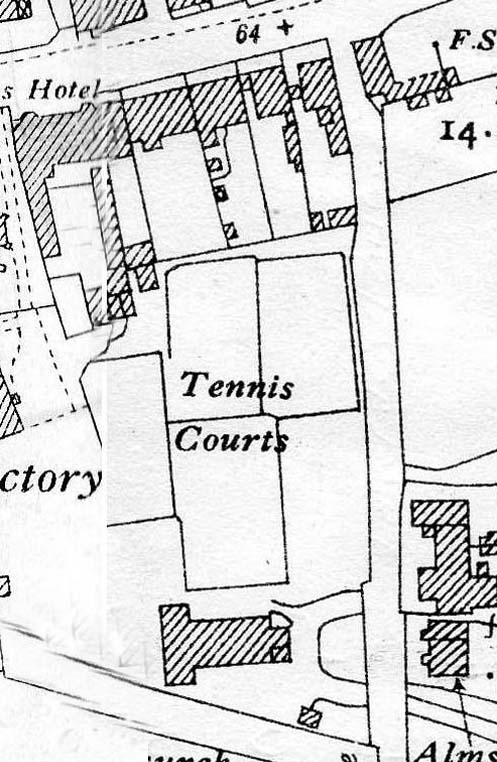
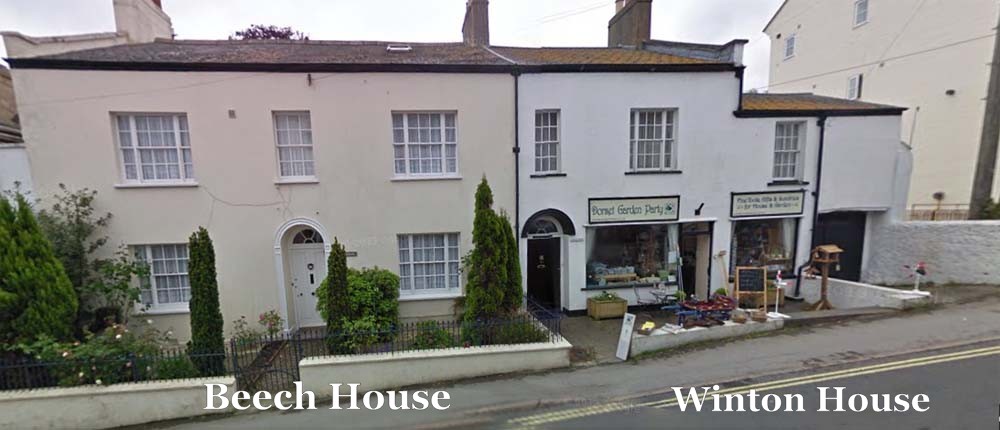
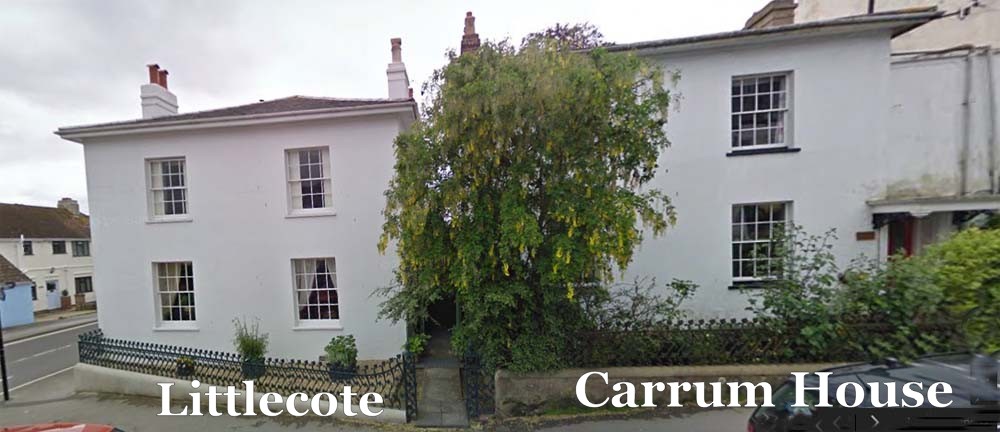


1888 Electoral Register
1915 Electoral Register



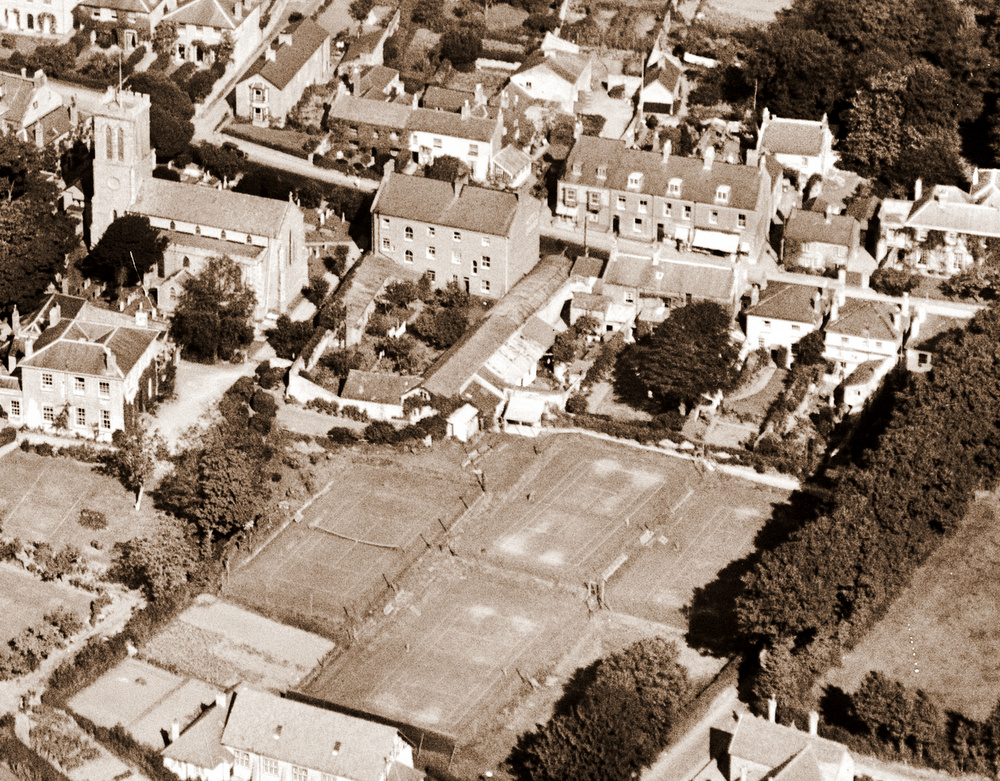
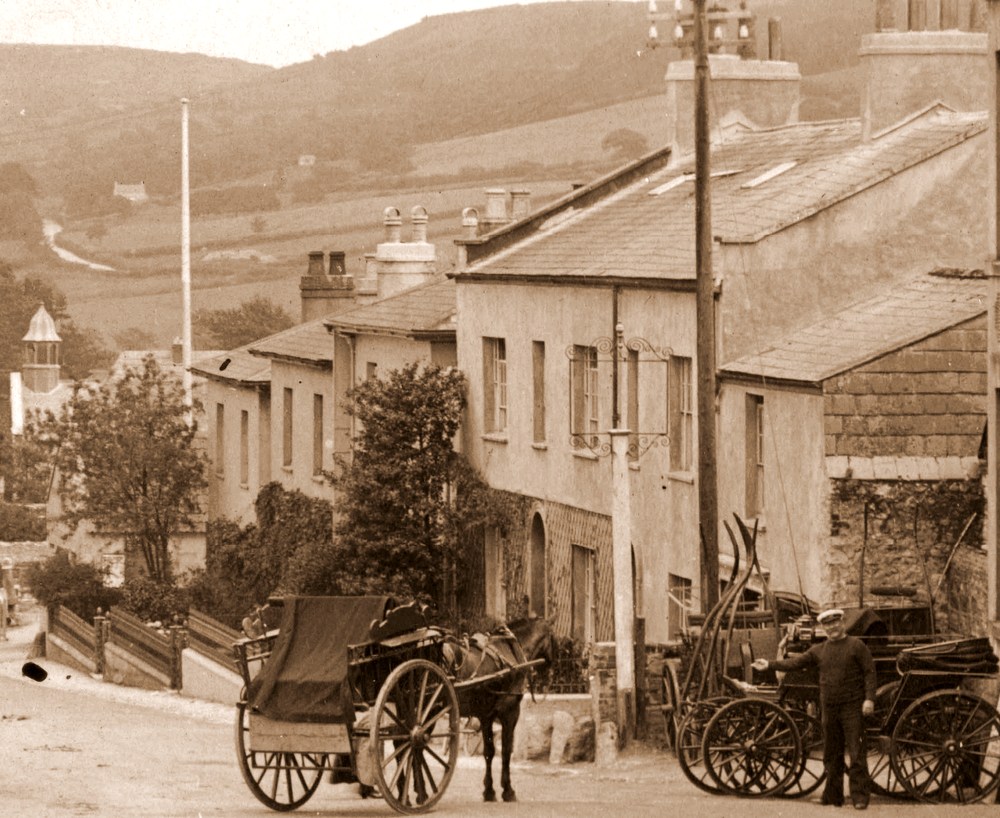
Hannah Newberry rented the 2 acres field from the Church as it was originally Glebe Land and appears to have purchased it by 1780 and then passed to her Grandson on her death in 1790. He was a butcher and it seems to have passed to John Hodges a butcher by 1841 when he is shown as renting it from the church. He must have owned it when he had 3 houses built on it. The first owner of Sandford Cottage is George Hodges and his sister Ellenore, who was the 2nd daughter of John, the butcher.HE lived in a hbouse rented from church on tithe number 217 and rented the fields around it. John; HODGES; 30; Butcher;Jane; HODGE; 25,Wm; HODGE; 4,Chas.; HODGE; 2,Eliza; HODDER; 18; Female servant. He also owned a house(t.no.1)that would become the Royal Oak and had been a butchers run by the Loves.School was supposed to be built on hodges buildings. on 1837 jury List as butcher, william edwards dies in 1829 and Inn bought by Gundrys.
1825 William Edwards - House, stable, garden, etc, Church Hay Mead, Mail Ciach Inn - Foss
1841 beech house is shown as empty. john Cronie as owner
lloks like house was Royal Oak. 1840 directory shows John as Butcher and Joseph as a shopkeeper
1861 Census
55; Charmouth Street; John HODGES ; Head; M; 50; Butcher & Grocer; Devon; ; F8P9
55; Charmouth Street; Jane HODGES ; Wife; M; 47; Butchers wife; Lyme Regis; ; F8P9
55; Charmouth Street; George HODGES ; Son; ; 17; Carpenters Ap; Charmouth; ; F8P9
55; Charmouth Street; Richard HODGES ; Son; ; 15; Scholar; Charmouth; ; F8P9
55; Charmouth Street; Mary HODGES ; Daur; ; 13; Scholar; Charmouth; ; F8P9
55; Charmouth Street; Eliza HODGES ; Daur; ; 11; Scholar; Charmouth; ; F8P9
55; Charmouth Street; Ellen HODGES ; Daur; ; 8; Scholar; Charmouth; ; F8P9
55; Charmouth Street; Alfred HODGES ; Son; ; 4; Scholar; Charmouth; ; F8P9
| HODGES, John | Charmouth Street | Head | Married | M | 40 | 1811 | Butcher | Sidbury | 45 |
| HODGES, Jane | Charmouth Street | Wife | F | 37 | 1814 | Butcher Wife | Lyme | 45 | |
| HODGES, Mary A | Charmouth Street | Sister | Unmarried | F | 30 | 1821 | Visitor | Charmouth | 45 |
| HODGES, William | Charmouth Street | Son | M | 14 | 1837 | Butcher Son | Charmouth | 45 | |
| HODGES, Charles | Charmouth Street | Son | M | 11 | 1840 | Draper Apprentice | Charmouth | 45 | |
| HODGES, John | Charmouth Street | Son | M | 9 | 1842 | Scholar | Charmouth | 45 | |
| HODGES, George | Charmouth Street | Son | M | 7 | 1844 | Scholar | Charmouth | 45 | |
| HODGES, Eliza | Charmouth Street | Daughter | F | 0 | 1851 | Charmouth |

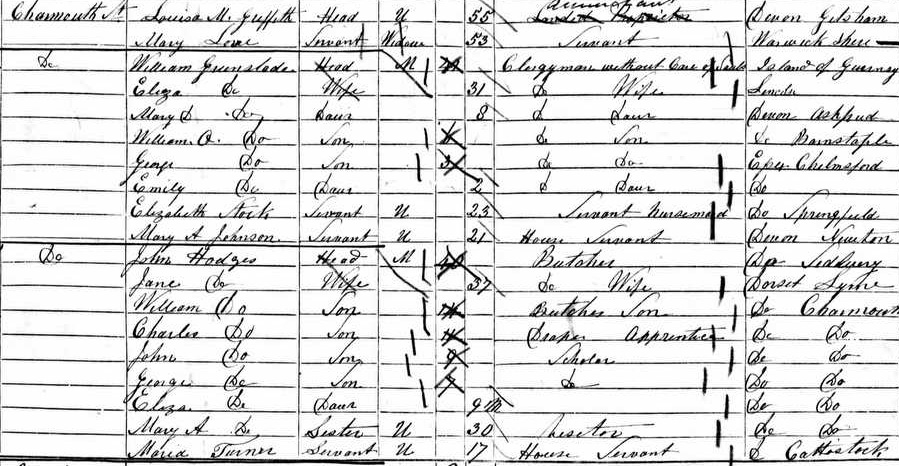

"Clarence Villa" now called "Carrum". In a memorandum by Samuel Dunn in 1844 he undertook to build a house for Miss Henning, which he let to her for twenty five pounds a year complete with garden and a pump of water. Miss Eliza Henning died in 1854 and Sophia Henning, who was blind, died in January 1886. During the 1920` s Charles Hodges lived here, who left £1,000 to purchase the Playing Field, he died in 1932 aged 92. It was then occupied by Peter Marshall who introduced electric light in the village. His engine and dynamo were in the corner of the playing field and proved a great success until power from the grid took over. The house today was then occupied by Mr. and Mrs. Bide and family.
Tho other two adjacent houses are similar and were probably built about the same time. As Dunn had to supply a water pump for Miss Henning it seems that there were no former houses on the site, which was possibly Glebe belonging to the Church. If so, it supports the theory that Beech House was the former parsonage,which would have been built on Church land.
1851 Census shows Eliza Henning Fund Holder aged 64 from Weymouth and house servant Elizabeth Dimont aged 30 from Uppottery
one house uninhabited
Louisa Griffith from Gitsham, aged 55 Landed Proprietrs unmarried with Mary Lane Servant aged 53 from Warwickshite.
william Greenslade 41 Clergyman without.. with family.
Than John Hodges - Beech House?
beech house could have been refronted as typical curved Pryer curved doorway. Was this done when Winton House added to side by hodges.described as a brick bult moierty in 1810
Apparently, one John Hodges added the shop and the family lived over it and in a room over outbuildings in the yard, with access being gained via external stone steps. It is probable that this latter structure still exists. From Pavey's account it would appear that butchers operated from these premises for well over a hundred years.
The Frampton family were traditionally butchers. The brothers' grandfather was a butcher at Beaminster and a photograph from c.1909 appears in Gosling's ‘Beaminster', from the Towns and Villages of England series, in which their grandfather, Giles, can be seen standing outside the shop in the square with his two elder sons, Ernest and Charles and other staff. The brothers' father - also named Giles and also a butcher - was the third son of Giles of Beaminster. He had a successful business in Exeter until he died from pneumonia at the young age of 34. He had three sons Edgar Giles, Reuben Ernest and Ronald Charles. These sons took their second given names from their father and their Beaminster uncles. After the death of Giles, his widow and the three boys returned to her family home at Axminster.
All three sons eventually became butchers and Reub learned his trade at Stewarts in Axminster in the days when use of a poleaxe was an important skill. Reuben then went to work for Harris in Lyme Regis and it was during this period that Ron was working for Marsh at Charmouth. It was at this time that Ron learned of the Marshes intention to sell and he and Reub together bought the business in 1938. Although qualified butchers, the brothers had little experience of buying and Reub confessed that his approach in the early days was to follow his old boss from Lyme and make one further bid after Harris dropped out, much to the latter's irritation, but as Reub said, he'd got to learn.
Whilst at Lyme, Reuben had married Aileen Rough whose parents had lived in Charmouth from around the end of the 19 th century, firstly at ‘Bow House', then at ‘Wood Farm' and finally at ‘Hogchester'. Aileen's father, Thomas John Frazer Kemp Rough, was a colourful character. When single and working as a gardener, he lived with his parents at ‘Rose Cottage', which was next to the ‘Royal Oak' but is now a part of it and has been for many years. Later on, he worked as a dairyman/tenant farmer and moved from farm to farm over the years.
Tom married Zelia Nina, the fourth daughter of Lambert Rendell and his wife Charlotte. In his early adult years, it seems that Lambert had moved to Guernsey and it was there that he met and married Charlotte and his children were bom. He later returned to England bringing wife, children and cattle! The family moved from Devon to Dorset where they also lived for a time at ‘Wood Farm'.
1871 farmer og 80 acres, was son rnning butchers at side. not on 1841 map. buyilt by pryers. 1854 Pryers built heritage centre. postman photo of back of beeces? Did Dunn own and rent them out. But he went bankrupt?